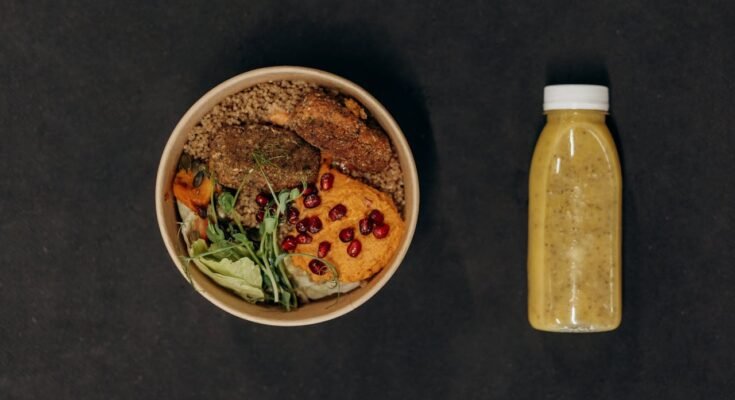Calorie tracking is one of the important areas to follow, especially if you want to be able to lose weight, gain muscles, or to simply adopt a healthy related diet. There are so many tools and apps to help streamline this process and make it more effective in our digital world today. Tracking apps such as MyFitnessPal and food diaries have become popular forms of behavioral tracks to help individuals monitor their dietary consumption. We can take a look at the advantages and practical advice for utilizing these tools to track your calories.
Why Would You Want To Track Your Calorie Intake?
It is vital to know how many calories you consume because it affects your weight management and energy levels. Every day the human body requires a specific amount of calories (energy) in order to operate. This depends on factors including age, sex, activity level and weight goals (loss, maintenance or gain). Tracking calories can help you do the following:
- Weight Management: If your goal is weight loss, a calorie deficit (eating fewer calories than body expenditure) is the need. On the other hand, to build muscle or gain weight, you’ll need to be in a calorie surplus. Tracking provides assurance that you are meeting these needs.
- Be Accountable: Monitoring your food consumption is going to make you more accountable for what goes into your mouth. It gives awareness of habits, making it easy to pinpoint places for improvement, like excessive snacking and overeating.
- Get To Know Your Nutrition: Tracking gives you more than just a breakdown by calories — it can also give you the breakdown of your macronutrients (carbs, proteins, fats) and micronutrients (vitamins and minerals). This is important for improving nutrition and health in general.
Using Apps like MyFitnessPal
For food intake and calorie tracking, MyFitnessPal is one of the most widely used apps. Its massive database of food, easy-to-use interface, and countless features for tracking a diet make it one of the most popular tools out there. Here’s what makes MyFitnessPal special:
- Food Database: MyFitnessPal has a HUGE food database with millions of food items including restaurant items, packaged foods, and homemade meals. You go on about logging the food is the easiest.
- Barcode Scanning: By scanning the barcode of packaged foods, nutritional information is automatically entered for you. Its huge time-saver feature improves accuracy.
- Custom Goals: You can also set individual calorie goals catering to your goals, whether it be weight loss, maintenance, or muscle gain.
- Here are the benefits of calorie count: Calorie Tracking: You can keep a record of your daily calorie intake, macronutrient composition, and exercise. But this type of visualization is a great motivator to keep going!
- Community and Support: MyFitnessPal includes a social feature built into the app, making it easy for users to join communities of like-minded people and share tips, recipes, and success stories for more encouragement.
The Old-School Food Diary
Apps are convenient, but some people prefer a more hands-on approach and a traditional food diary works just as well. To get deeper into your eating habits, keep a notebook in which you write down everything you eat — meals, snacks, whatever.
Here are some tips for how to make the most of a food diary:
- I say this to O.L.D. as well but: Log Everything — be honest and record everything you eat and drink, no matter how small be they a morsel or a drink. As you do this for a while, you’ll start to develop a more concrete sense of your calorie intake and overall eating habits.
- Be Consistent: Recording your food entries regularly should be turned into a habit. This consistency enables trend tracking and the making of necessary changes.
- Reflect and Review: At the end of every week or month, go through what you’ve written. Are there any common themes? Are you consuming more calories than you need? This is a great tool for reflection because there are times when you can make changes.
- Use a Calorie Chart or App to Track Nutrients: When tracking calories in a diary manually, you may refer to food labels or online resources for calorie as well as nutrient information. Mark your calorie targets, macronutrient needs, and portions on a chart and use it to help you stay on track.
How To Track Your Calories More Effectively
Regardless of whether you’re using an app or tracking it in a food diary, there are some tips that help make tracking your calories easier:
- Measure Portions: It can be easy to underestimate or overestimate portion sizes, which can make caloric counts unreliable. You can use measuring cups, a food scale, or use portion sizes provided on food packaging.
- Track Drinks and Condiments: Be aware of drinks and condiments, they can be really high in calories. A cream in coffee or a spoon of the dressing does not seem too much, but may add up to hundreds of extra calories on your daily account.
- Prepare Ahead of Time: Make sure to start dry food meal prep so that you can manage your impulsive eating habits. That way, you can log them before you eat, making it easier to stay on track with your calories.
- Be Honest: You need to be honest about calorie tracking. If you do eat something that doesn’t fit your goals, logging what you ate and why it happened is critical for learning from your decisions and adapting in the future.
- Do Not Obsess Over Numbers: Tracking calories can be useful, but do not obsess over every little detail. Don’t worry about tracking everything about what you eat, and focus on making healthier choices overall and use a calorie tracker, if you have one, as a tool to improve, not something to stress over.”
Final Thoughts
Whether your goal is to lose weight, eat better, or stay in shape, tracking your calorie intake is one of the greatest tools available to help you reach your health goal. Apps such as MyFitnessPal make logging meals easy and duplicate the insights, while a good old-fashioned food diary is more intimate. Either way, the trick is consistency and mindfulness — making deliberate choices that will serve you well for the long haul.
About you————–You can track your health today and take it in the right direction, one meal at a time.



